Text
Gloriette Vienna
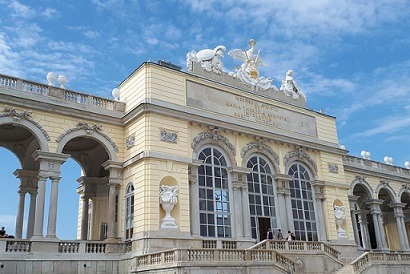
The word “Gloriette” refers to a building in a garden that is located on an elevated site. The largest and most famous of these is the Gloriette in the palace garden of Schönbrunn in Vienna.
It was built in 1775 by Johann Ferdinand Hetzendorf von Hohenberg as a “Temple of Fame” to commemorate the “just war that led to peace”. This meant the turmoil that followed the annexation of Silesia by Frederick the Great.
For reasons of economy Maria Theresa decided that already used materials should be used. “There is an old gallery of stone columns and cornices at Neugebau, which is of no use … to have them demolished from there and brought to Schönbrunn afterwards”.
Later it served as a dining and banqueting hall as well as a breakfast room for Emperor Franz Joseph I, who used it until his death.
From 1790 to 1910 the three middle arches of the Gloriette were glazed. After several decades as an open building, a historic-style glazing was reinstalled in the course of the restoration in the 1990s.
Café Gloriette finally opened its doors in April 1996.
6 notes
·
View notes
Text
Duke of Enghien

“That was worse than a crime, that was a mistake.”
The one who said this was not just anyone, but one of Napoleon’s most important ministers, the “Ministre de la Police” Joseph Fouché, feared by everyone.
By summoning a whole army of informers, he had succeeded in uncovering a conspiracy around the generals Cadoudal, Pichegru and Moreau, who were involved in an assassination attempt on Napoleon.
But Napoleon’s vindictiveness was not yet satisfied with the conviction of the traitors. Rather, he looked for another victim to send a widely visible signal to the loyal followers of the Bourbons.
He found it in the young Duke of Enghien, Louis Antoine Henri de Bourbon-Conde, who lived near the French border in Ettenheim near Baden. Politically insignificant, however, he was an ardent supporter of the Bourbons and fought as an officer in the army of emigrants against the National Guard of the still young republic.
Thus, on the night of 14 to 15 March 1803, a group of the gendarmerie, accompanied by 300 Dragons, sneaked across the border to kidnap the Duke and bring him to France to accuse him of treason.
The papers found in his possession clearly proved that the Bourbons recruited conspirators against Napoléon. The First Consul reacted with unbridled rage: “Why don’t they carry weapons against me? Instead, they send out muggers, blow Paris up, kill innocent people. For this they shall weep bloody tears.”
The duke was brought before a military tribunal after only a few days. He himself declared that he had sworn irreconcilable hatred to Napoleon and would use every opportunity to fight revolutionary France.
But he firmly rejected the accusations of having participated in a conspiracy against the life of the First Consul. Nevertheless, he was sentenced to death and executed the very next day.
From the point of view of foreign policy, this was a serious mistake because the European states, especially Baden and Prussia, saw themselves threatened in their state sovereignty.
Domestically, however, Napoleon knew that broad sections of the population were behind him, who were still loyal to the young republic. Moreover, all other royalist conspiracies were nipped in the bud.
1 note
·
View note
Text
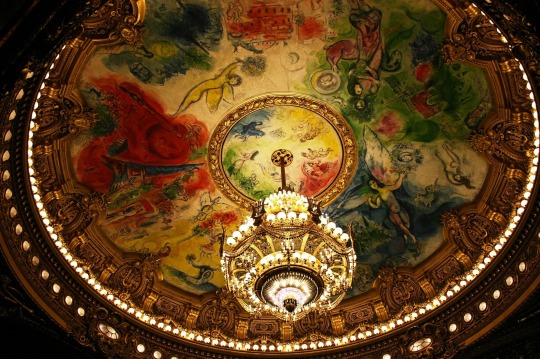
At the end of the 19th century Vienna was undisputedly the music capital of Europe.
Let the other countries quietly snatch the riches of the earth under their nails, the German neighbouring empire should unite and plunge into the feverish frenzy of an industrialisation that swept away everything old. Here in Vienna one remained with the traditional and it was the art and the beautiful life which had the greatest importance for the people.
This thinking went through all layers. Even the smallest citizen did not only look for a good glass of wine at “his wine bar”, but also demanded beautiful music. Every Viennese knew which military band played best, where there were the most beautiful songs and who performed at the Volksoper in the evening.
youtube
Besides the Italians, the Viennese were the most musical people of their time. The songs sounded in all the streets, washerwomen hummed the most beautiful melodies for their work, musicians played from their works when the windows were open and the smile of a famous opera singer was more than a king’s greeting.
Only in this air could a Schubert raise his voice, only here could a H. Wolf dream of Spain or a J. Brahms resurrect Viennese Classicism once again.
And probably only here could one of the most light-footed and refreshing genres in music history emerge: the operetta.
.....
More about european culture on my App: Der Leiermann
.....
0 notes
Text
Long guys
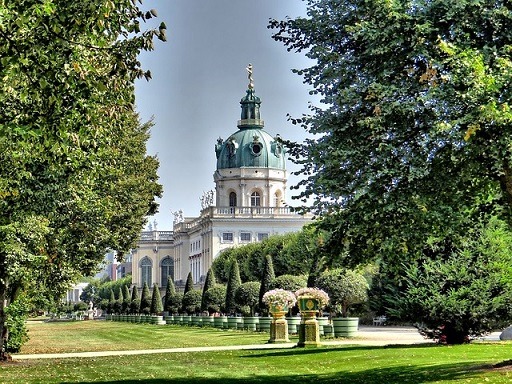
Frederick William I. loved to have his soldiers march up. Even as crown prince he founded his own guard, which was popularly known as the “Potsdam Giant Guard” or “Lange Kerls” (Long guys).
They received this name because none of them was allowed to be smaller than six feet (that was almost 1.90 meters). Since this requirement was not easy to meet in view of the average size of 1.68 m at that time, the “Langen Kerls” had to be brought to Prussia from all parts of the world by money or force.
However, those who had come to terms with their fate expected a relatively good life. Because as a “parade soldier” the then usual hand money and pay were far above that of an ordinary soldier and the king even went so far as to give his darlings houses and provide for a suitable wife.
Of course, all this devoured enormous sums and Friedrich Wilhelm was always on the lookout for new sources of income. Taxes on luxury goods such as tea, sparkling wine or fruit ice cream proved particularly profitable. Therefore he declared coffee to be a luxury good and hoped for additional income.
But first he faced the problem that his subjects did not want to get used to the new drink. Not surprisingly, the black drink was so bitter that people could only enjoy it with plenty of cream and sugar.
But Friedrich Wilhelm helped and promoted coffee drinking in every conceivable way, for example by having coffee houses built in as prominent a location as possible in his capital, such as the “Café Royal” opposite the city palace.
His plan bore fruit and already in the middle of the 18th century coffee was a widespread drink and for the fine Berlin society it was part of the good tone to meet for a coffee party.
In a diary from that time, it reads as follows: “Should things be a little more refined and put more on the table, then, for example, an unmarried organ maker invited his guests to a Sunday afternoon and served them well-prepared coffee, Rhine wine and crusty zwieback. A young maid who had asked for coffee served plums and grapes after the coffee. Frau von Dorn, who lives at the Molkenmarkt in the Schwerinschen Palais, also accommodated her guests with coffee, small sugar pretzels and grapes. After the coffee or tea, the gentlemen were offered a nice aquavit and fresh rolls”.
And in 1744 the Kurmärkische Domänenkammer reported that “coffee consumption had become nature for almost everyone and even for the ordinary citizens”.
Thus the income bubbled, always fresh gold flowed into the coffers and Friedrich Wilhelm could afford again one of his beloved “Langen Kerls”.
0 notes
Photo
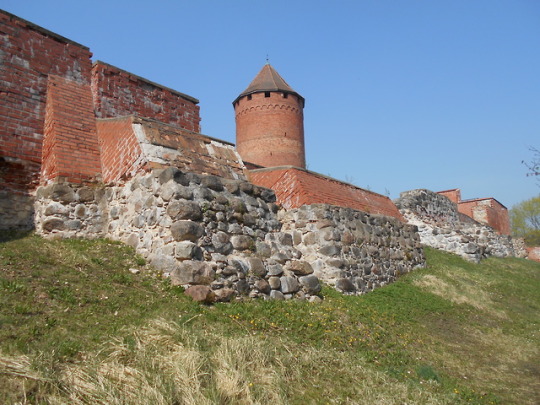
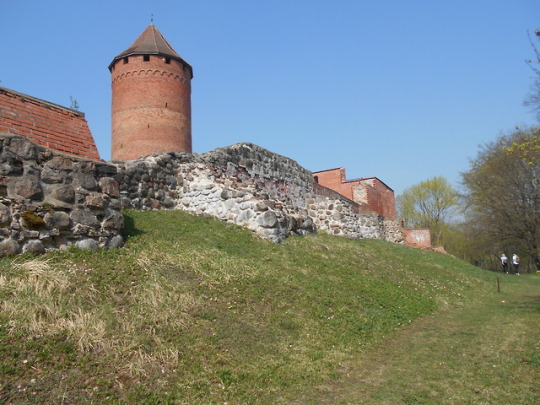
Turaida Castle in Sigulda, Latvia, April 26, 2019. Photos by D.P.
9 notes
·
View notes
Text
“Sometimes there’s beauty in the tough words—it’s all in how you read them.”
Jennifer Niven, All the Bright Places
6 notes
·
View notes
Quote
Be yourself; everyone else is already taken.
(Oscar Wilde)
2 notes
·
View notes
Text
Galeries Royales Saint-Hubert
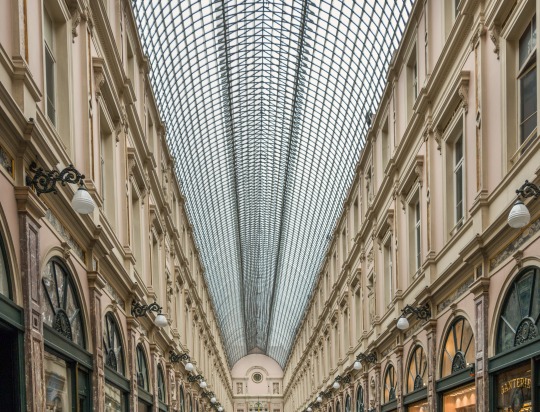
At the beginning of the 19th century, Dutch architect Jean-Pierre Cluysenaar came up with the idea of modernising part of the narrowly built and poorly lit city centre of Brussels. With a new type of building, he not only wanted to give the city a contemporary appearance, but also to attract members of higher society and the nobility to this less frequented part of the old town.
In 1836, together with the banker Jean-André Demot, he founded the “Société des Galeries Saint-Hubert”.
It took them nine long years to buy all the land so that they could start the work. The gallery was completed within a year and was opened by King Leopold I on 20 June 1847.
Built in the Florentine Renaissance style, the shopping arcade is 213 metres long and consists of a corridor with two upper floors protected from the weather by a glass roof. This made it possible to sit in a street café at any time, even in Brussels’ harsh climate.
The gallery itself consists of three parts: the “Galerie de la Reine” (Queen’s Gallery), the “Galerie du Roi” (King’s Gallery) and the “Galerie du Prince” (Prince’s Gallery).
From the outset, the Passage attracted numerous luxury shops that gave Brussels the flair of a European metropolis.
Today, together with the famous Passage in Saint Petersburg and the Galleria Vittorio Emanuele II in Milan, it is regarded as a model for all later shopping arcades and malls.
…..
More about on my new (free) App: Der Leiermann
0 notes
Text
Anecdote Napoleon “Buona Parte”
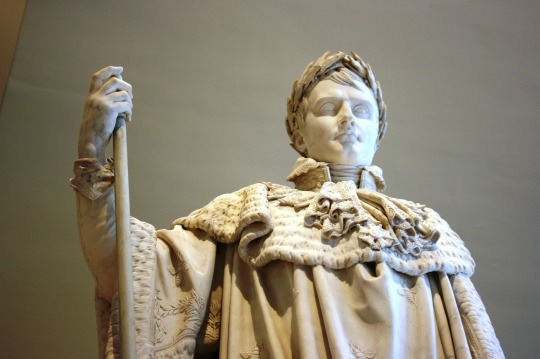
It was a strange spectacle that began like a lightning flash on the horizon and lasted only fifteen years, but changed the face of the old continent forever.
A Corsican buccaneer conquered the once most powerful throne of the Occident and swept like a storm through the lands of the ancient monarchies, crowning a new ruler here, overriding old birthrights there, or simply conquering unwilling lands.
As a young man, Napoleon Bonaparte took Lombardy from the Habsburgs and declared Milan the capital of the Cisalpine Republic and therefore a part of the French Republic.
The country was briefly to be lost again in the “Second Coalition War”, but Napoleon completely regained Italy with his victory at Marengo.
When he gave a ball to celebrate the re-conquest of Milan, he told his Italian guests that so many works of art had been stolen in the meantime.
He said in Italian: “Glie italiani sono tutti ladroni” (“All Italians are thieves”).
Countess Caracciolo pointedly remarked: “Not everyone, Your Excellency, ma buona parte” (“only a good part”).
…..
More about European Culture and History on my new (free) App: Der Leiermann
1 note
·
View note
Text
Two Sisters, On the Terrace

Still indulging in the memories of his last trip to Italy and under the influence of the works he had seen there, A. Renoir received a handbook on painting written around 1400.
This work and the paintings of J.A.D. Ingres gave the impulse to a new stage in the life of this great Impressionist, which we know today as his “Ingres” period.
Until then it was the freshness and naturalness of his pictures and the representation of an original joy of life through radiant colors, which constituted his work. But now he turned increasingly to classicism and his painting style became harsher and stricter in expression.
Although he remained faithful in the choice of his objects, their execution is clearly distinguishable from the works of the preceding period.
At the very beginning of this new creative period he created one of his most popular works, the “Two Sisters, On the Terrace”.
It shows Jeanne Darlot, a young actress, and her young companion. Darlot wears the traditional blue of the skippers and sits in the midst of the atmospheric landscape of Chatou, a suburb of Paris, where the artist spent much of spring 1881.
Her absent gaze wanders into the distance, past the painter and also carefree of the child at her side, who seems to have stumbled into the picture by chance.
Although the picture was strictly composed, it seems to us that it was born of the moment. Almost as if on a random photograph, one sees a little girl and her girlfriend in a moment of quiet contentment and tranquillity.
And yet it is blown by a cool austerity in which Renoir’s new mastery and his preoccupation with tradition can be seen.
Renoir was aware of the danger that the background would become too dominant and swallow the young women, as if they would lose themselves in the vastness of the landscape.
But through a clever idea he gives the picture contour and an inner firmness. Because the young woman is sitting in front of a railing and thus we do not find ourselves, even if without really noticing it, in the open space, but nature is domesticated and is only the frame of the action, no longer its centre.
A wonderful painting that expresses exactly what connoisseurs love about Renoir and what a stranger once summed up with the words: “He loves everything in life that is cheerful, brilliant and comforting”.
….
More about European Culture and History on my new (free) App: Der Leiermann
1 note
·
View note